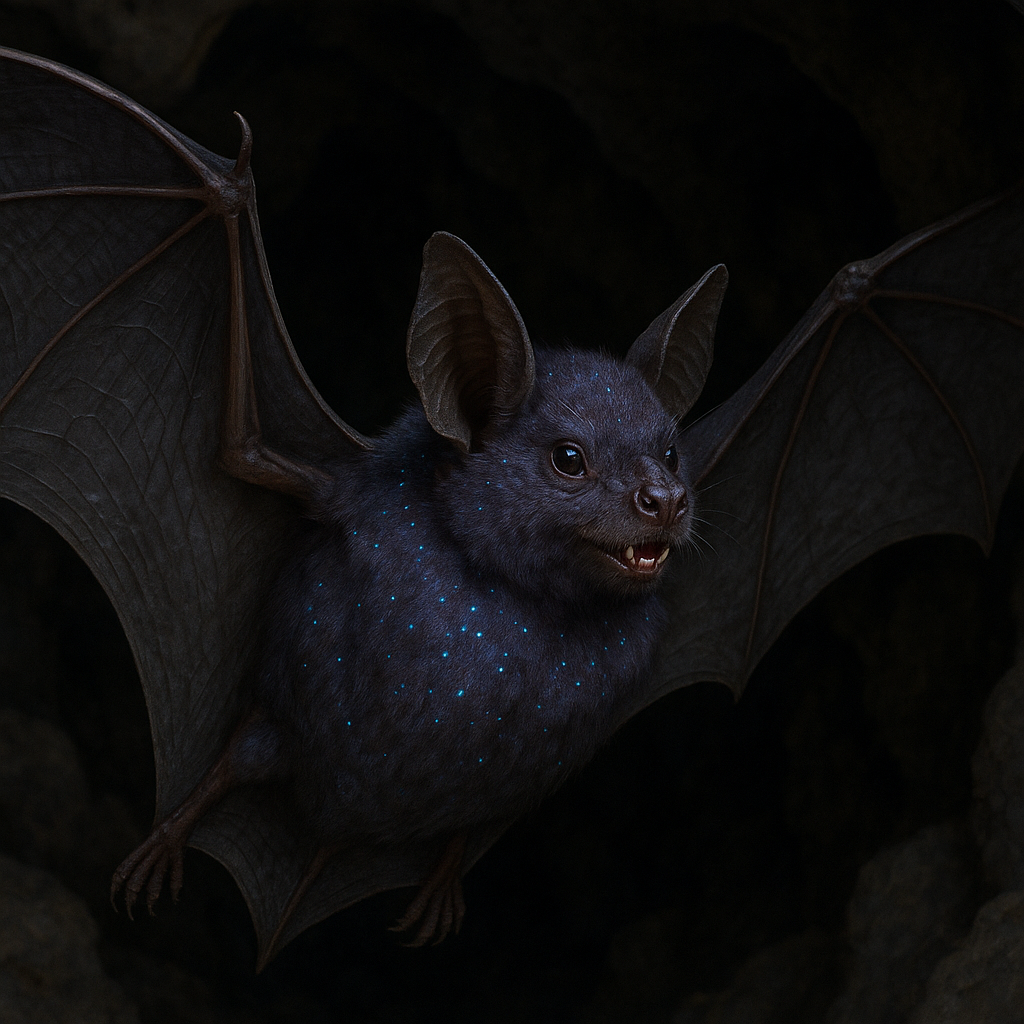Blood-Bat
Dwarven Name: Drak’zûl-nath (“Blood Brother”)
Classification: Mammal, Microbat
The Blood-Bat, known to the Dwarves as Drak’zûl-nath, is a species of tiny subterranean bat endemic to the deep cave systems of Vashkelholme. Despite its ominous name and blood-drinking habits, it is not a predator, but a symbiotic species that has co-evolved alongside the Cave-Hogs (Groth'harn). Revered by some Dwarven tunnel-keepers and beastmasters, the Blood-Bat plays an essential role in the health and hygiene of the subterranean ecosystem.
Cultural Significance
In Dwarven culture, Drak’zûl-nath are seen as loyal and pragmatic. Symbols of trust in mutual need, they are common on the crests of Beastmasters' Guilds and Tunnel Scouts. Some Dwarven children even keep domesticated Blood-Bats as pets—once they are weaned off blood and fed fermented mushroom slurries instead.
Basic Information
Anatomy
- Size: Wingspan of 30 cm (12 inches), body around the size of a clenched fist.
- Coloration: Ash-grey to deep violet fur, often mottled with bioluminescent specks from their diet.
- Teeth: Their feeding teeth are specialized for shallow incisions that clot quickly, rarely causing harm.
- Lifespan: 10–12 years in the wild.
Additional Information
Uses, Products & Exploitation
Research Notes
BRASC has studied their anti-coagulant saliva, which may hold medicinal properties for preventing blood clots or for controlled bleeding during surgery. Alchemists aboard the Celestial Arcadia have also noted its antifungal potential when distilled properly.
Perception and Sensory Capabilities
- Echolocation: Adapted to navigate tight caverns. Their screeches are tuned to a frequency that can subtly calm Cave-hogs.
Symbiotic and Parasitic organisms
The Blood-Bat maintains a mutualistic relationship with the Cave-hog, a large, tusked boar-like creature domesticated by Dwarves for meat, hide, and tunnel navigation.
What the Blood-Bat Gains:
- A stable food source: Blood-Bats feed on the rich, iron-heavy blood of the Cave-hogs by making painless, superficial bites—usually around the thick skin of the neck or haunch.
- Warm roosting spots: Blood-Bats often nest in the thick, bristly manes of Cave-hogs, particularly in cold tunnels. Some even cling to the undersides of the hogs while they travel.
What the Cave-Hog Gains:
- Parasite control: Blood-Bats consume harmful skin mites, ticks, and fungal growths as part of their grooming behavior.
- Fungal spore dispersal: Blood-Bats excrete fungal spores beneficial to the fungal groves that both species feed from—helping to keep food sources abundant.
- Protective swarm: When a Cave-hog is threatened, nearby bats will swarm and distract predators, especially those sensitive to echolocation pulses.
Some dwarven breeders even encourage this pairing, claiming that Cave-hogs with Blood-Bats live longer, stay calmer, and grow thicker hides.

Misconceptions
While the name "Blood-Bat" might invoke fear, they do not attack other creatures unless provoked or starving. Attacks on humanoids are exceedingly rare, and even then are seen as a warning sign of ecological imbalance in the tunnels.



Comments